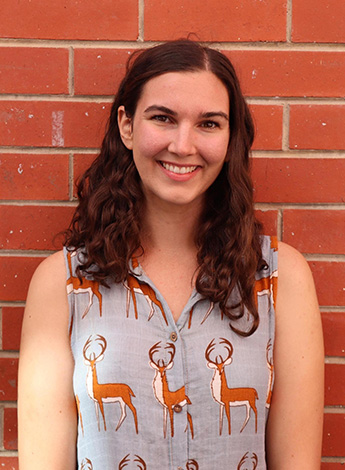
A biopsychosocial approach to exercise and movement

The benefits of taking affordances into account when prescribing exercise for people living with chronic pain are outlined by Erin MacIntyre.
Exercise prescription is a mainstay of physiotherapy treatment.
Along with other forms of movement, exercise is a large component of guideline-based care for many musculoskeletal conditions because of its positive effects on key patient-reported outcomes (eg, pain and disability) as well as other comorbidities with which people experiencing pain often present.
The biopsychosocial model of pain is a common framework that can be used to understand pain, disability and health.
However, despite widespread support for the biopsychosocial model, qualitative research suggests that many practitioners lack confidence in applying this framework to exercise in the clinic.
At the 2023 Australian Pain Society’s 43rd Annual Scientific Meeting in Canberra, I was one of the presenters of a topical workshop exploring exercise prescription within a biopsychosocial framework.
Dr Matt Jones started the interactive workshop by presenting recent work on the role of exercise in addressing multimorbidity in people with chronic pain.
Dr Mitchell Gibbs asked the audience if we can design biopsychosocial exercise interventions and Brendan Mouatt took the groups through a contemporary sense-making model designed to help clinicians understand the patient experience.
I presented an affordance-based approach to understanding pain and engaging with physical activity.
Affordances are possibilities for action that arise from the interactions between a person and their environment.
For example, to me (and most people) a chair affords sitting.
However, to my dog that same chair affords quite different activities. It might afford a place for a nap or (more likely) the chair legs afford chewing.

Erin McIntyre.
Affordances are influenced not only by body capacity, but also by wider sociocultural contexts, emotions and past experiences.
In my presentation I showed the audience a video of parkour athletes jumping from one building to the next to illustrate how a single environment can afford very different actions, depending on someone’s background, nerves, fitness and skill level.
Affordances have a long history in psychology but the idea has only recently been applied to pain.
Empirical studies show that one’s affordances can be affected by threat (Creem-Regehr et al 2019), depression (Bague & Laurent 2023) and acute pain (Deschamps et al 2014).
These changes are in line with protection—when threat is high or capacity is low, affordances tend to contract.
For example, during conditions of experimentally induced knee pain, people’s jumping affordances reduced compared to when they didn’t have knee pain.
Importantly, these reductions in perceived capacity were in line with their actual performance and their affordances returned to normal after they recovered from the pain.
This shows us that pain can change our affordances and that the changes may be playing a protective role.
However, less is known about how chronic pain influences affordances.
Sabrina Coninx and Peter Stilwell have published theoretical reviews on the topic, including on how affordances can be used to make sense of pain as well as clinical interactions with those experiencing chronic pain (Coninx & Stilwell 2021).
More recently, they published a clinician-friendly review article that expands on an affordance-based model of chronic pain using an extended video game metaphor (Coninx et al 2023).
Chronic pain is thought to limit a person’s affordances, reducing the number of affordances available.
The remaining affordances tend to lose their relevance and become negatively valenced.
Visual perception may also change (Witt et al 2009)—people with pain may view the world as harsher.
My research builds on this past work.
We are investigating whether people with knee osteoarthritis view the world differently from those without pain and how these perceptual changes relate to affordances and other behavioural outcomes.
What does this mean for clinicians?
We want to help people to expand their affordances and to perceive opportunities for interacting with their environment.
An affordance-based model doesn’t advocate for a specific treatment; rather, the goal is to work with the person experiencing pain so they can re-engage with the world and with meaningful activities, re-experience their body and reconstruct their affordances.
Considering affordances can give clinicians a new way to understand the person experiencing pain by encouraging them to consider how both personal factors and the built environment contribute to engaging in movement.
Working within a biopsychosocial framework expands opportunities to find the optimal intervention for an individual rather than just for their condition.
This allows clinicians and patients to be creative (and to have fun) with exercise prescription, which in turn can have positive impacts on a person’s pain and their physical and mental wellbeing.
>> Erin MacIntyre APAM is a physiotherapist and a PhD candidate at the University of South Australia. Her research explores the link between vision and pain and the idea that pain itself may result in perceptual changes that prevent exercise engagement.
- References
-
Creem-Regehr, Sarah H., et al. "Mind the gap: Gap affordance judgments of children, teens, and adults in an immersive virtual environment." Frontiers in Robotics and AI 6 (2019): 96.
Bague, Kévin, and Éric Laurent. "Depressive symptoms and affordance perception: The case of perceived reachability boundary." Psychonomic Bulletin & Review (2023): 1-14.
Deschamps, Thibault, et al. "Influence of experimental pain on the perception of action capabilities and performance of a maximal single-leg hop." The Journal of Pain 15.3 (2014): 271-e1.
Coninx, Sabrina, and Peter Stilwell. "Pain and the field of affordances: an enactive approach to acute and chronic pain." Synthese 199.3-4 (2021): 7835-7863.
Coninx, Sabrina, B. Michael Ray, and Peter Stilwell. "Unpacking an affordance-based model of chronic pain: A video game analogy." Phenomenology and the Cognitive Sciences (2023): 1-24.
Witt, Jessica K., et al. "The long road of pain: Chronic pain increases perceived distance." Experimental Brain Research 192 (2009): 145-148.
© Copyright 2025 by Australian Physiotherapy Association. All rights reserved.





